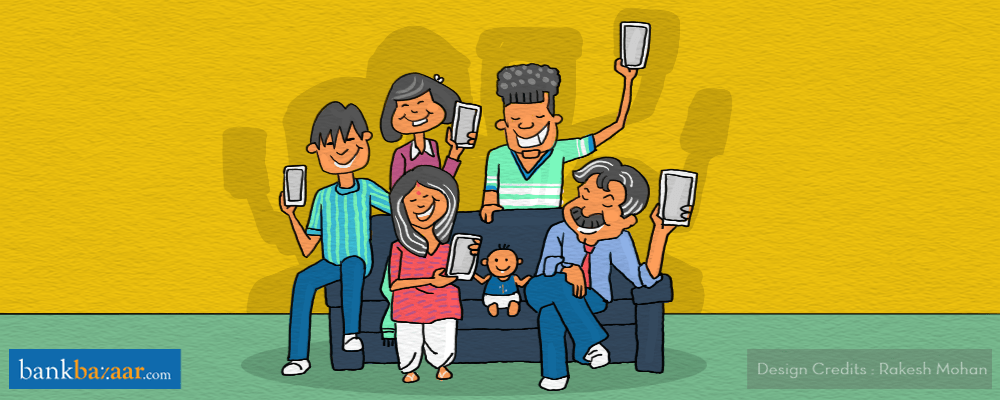The National Digital Literacy Mission furthers the government’s resolve in achieving a cashless and digital economy. Read about it here.

The 2011 census pegs the number of villages in India at 6, 49,481. It also reports that 31% of the population in India lives in urban areas. These statistics reveal how a large part of India remains deprived of the benefits of economic progress that is available to urban India. Approximately 40% of the population lives below the poverty line and the illiteracy rate is more than 25-30%. Moreover, digital literacy is a distant dream for more than 90% of the population.
Digital India: The way forward
When it comes to last-mile delivery of benefits, the government always finds the prospect challenging. Increasingly, the government with support from the NGOs, is exploring better ways to reach remote and rural India. To meet this objective, the government launched the National Digital Literacy Mission.
In a further boost to the government’s efforts to push a digital economy, the Reserve Bank of India (RBI) in 2016 allowed for Aadhaar-enabled OTP-based eKYC. Financial institutions thereafter have had the option to onboard customers through an OTP (One Time Pin)-based Aadhaar e-KYC process. Customers can use the OTP generated through UIDAI on their mobile phone to complete the e-KYC process electronically.
Additional Reading: Aadhaar Based e-KYC: All You Need To Know
The digitisation of payments is a move that aims to include more and more customers in the formal banking system. Digitisation aims to bring the rural population face to face with products like insurance, overdraft facilities, and Mutual Funds and access them instantly and easily.
Additional Reading: Digital Bill Payments In India
About The National Digital Literacy Mission (NDLM):
Tying in with Prime Minister Narendra Modi’s vision of “Digital India”, the National Digital Literacy Mission was launched in 2014. Under the mission, the beneficiaries will undergo a 20-hour training session where they will learn how to use computers and other digital devices, browse the internet and send and receive emails. The NDLM is an integrated programme of digital literacy awareness, education and capacity programmes aimed at helping rural communities take the lead in the global digital economy. It’s also aimed at enabling them to maintain competitiveness and also shape a technologically-empowered society.
Additional Reading: Going Cashless: Here’s What You Should Know
The NDLM targets working with multiple stakeholders to make at least one adult from each of 147 million rural households in India, digitally literate. Under the NDLM, IT training will be given to 52.5 lakh persons, including Anganwadi and ASHA workers and authorised ration dealers in all the States/UTs across the country. This will ensure that every non-IT literate citizen is trained to become IT literate. This will further enable him/her to actively participate in the democratic and developmental process as well as enhance his/her livelihood.
This programme was initiated in an effort to extend the objectives of the National Optic Fibre Network (NOFN). The NOFN is a plan that the Universal Services Obligation Fund (USOF) had tasked the Bharat Broadband Network Ltd. (BBNL) to roll out. Under this plan, the BBNL will lay out optic fibre cables terminating in each of the 250,000 gram panchayats in the country, to ensure that digital inclusion has reached all villages across the country.
More recently, in the first half of 2017, the government launched the Pradhan Mantri Gramin Digital Saksharta Abhiyan with a target of training six crore people and helping them develop their IT skills by March 31, 2019. The budget for this is Rs. 2,351 crores.
Objectives of NDLM:
- Empower rural communities with capacity building and training programmes and make them digitally literate.
- Facilitate deployment of rural citizen services through digital means.
- Create a digital data house at every community level to make them economically viable.
- Generate social, cultural and economic advantages for rural communities with an information and content gateway.
Eligibility:
- Any person aged between 14-60 years.
- Possesses an Aadhaar card.
- Non-IT literate.
Extending digitisation into the financial sector:
Demonetisation that took the country by storm last year led digital transactions soar to an astonishing number in India. The launch of mobile-friendly and secure payment options and regulatory policies introduced by the government, that support online payment methods, facilitated this development.
Additional reading: How To Use Digital Wallets Effectively For Online Transactions
According to a study conducted jointly by Google (Alphabet Inc.) and the Boston Consulting Group, the quantum of non-cash transactions within the country will exceed that of cash transactions by 2023. The report also projects that the digital payments industry will grow ten-fold by 2020.
With digital payment platforms abounding today, financial transactions have never been quicker, easier and more hassle-free. Getting a Personal Loan, Credit Card or even Mutual Funds have never been easier either. You can do it all on a single platform only on BankBazaar!